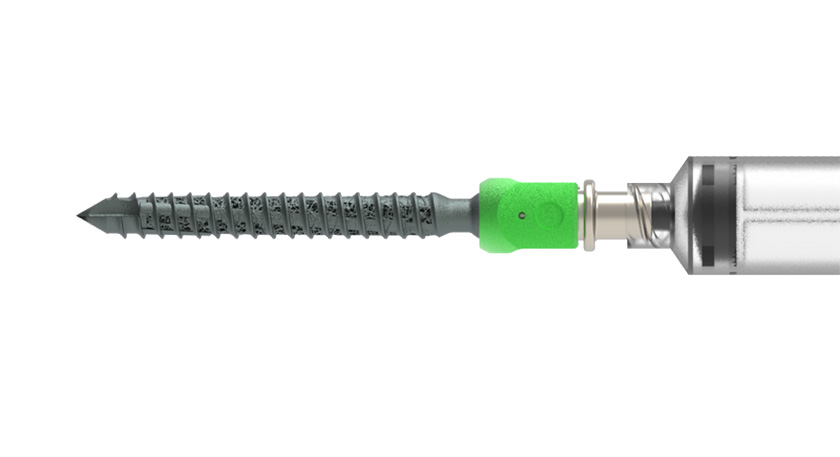
The future of medical device design is becoming more virtual as synthetic patients and computational modeling are used to accelerate innovation and reduce the cost and time required to bring new devices to market. Simulation and in silico evidence were a hot topic of discussion earlier this year at the spring meeting of the Orthopaedic Surgical Manufacturers Association (OSMA).
“In industries like automotive and aerospace, relevant engineering elements are managed through simulation, allowing teams to create and test a wide range of scenarios,” said Luca Emili, CEO of InSilicoTrials. “However, it remains underutilized in the healthcare industry.”
The use of in silico trials is gaining traction in orthopedic device development thanks to its ability to mimic complex biological systems and predict how medical devices behave in the human body. These simulations combine artificial intelligence, mechanistic models and patient data to build digital environments that can simulate thousands of clinical scenarios safely and cost-effectively.
It’s rarely possible to rely on a single model for all testing needs. Instead, there’s an increasing need to combine and integrate validated models to run hundreds or even thousands of scenarios, something that would be expensive, or even impossible, to replicate in the real world.
Emili said in silico trials use individualized computer simulations in the design, development and regulatory evaluation of new devices. The main advantages include cost reduction, time efficiency, reduced ethical concerns, the exploration of complex systems and the improved prediction and optimization of testing.
Emili noted that in silico testing provides predictions on implant effects and interaction with human tissues or anatomy, identifies potential risks and enhances patient safety, compares the product in development with competitors on the market and conducts biocompatibility assessments.
When used on virtual patient populations, in silico testing assesses the safety and efficacy of new medical devices by performing multiple virtual surgical procedures. It identifies worst-case scenarios, highlights features that need revision and predicts the device’s success rate.
The testing is also used to reduce, refine and replace in vivo clinical trials in terms of cohort size and time duration, and provides digital evidence for under-represented or underserved patient populations.
Simulation can reduce the reliance on expensive, time-consuming clinical trials and, in some cases, eliminate the need for animal testing.
In April, FDA announced it was replacing animal testing in the development of monoclonal antibody therapies and other drugs with more effective, human-relevant methods, including AI-based computational models.
“That shows the extent to which simulation testing can be applied,” Emili said.
Strategic Tool
Cheryl Liu, Ph.D., Director of Computer Modeling and Simulation at Stryker, leads a team that’s involved in developing and validating simulation technologies that enable faster, more efficient design decisions across Stryker’s product lines. Their work ranges from concept ideation to post-market analysis and product updates.
“We focus on simulation technology and process automation,” Dr. Liu said. “That includes developing new simulation methods, whether it’s structural or fluid dynamics. We need to simulate specific tests or clinical evaluations, and that often means building our own physics-based models.”
The models cover a wide range of applications, from evaluating surgical instruments under repetitive impact loading to understanding how new manufacturing processes like metal injection molding and additive manufacturing affect device quality and consistency.
“When a surgeon comes to us with a new device idea, it’s still early in the process and we don’t always have the budget dedicated to the project,” Dr. Liu said. “If we didn’t de risk it through simulation, we’d end up finding out that the product doesn’t add value to our current portfolio. That would be a huge risk for the business.”
Her team uses simulation to evaluate performance requirements, test against clinical relevance and determine manufacturability, including critical cost controls.
If manufacturing changes the design, Dr. Liu’s team can quickly re-run simulations to make sure the new version still meets performance specs.
“We iterate based on design for manufacturing,” she said. “So, if we have a mature, validated simulation model, we can easily go back and check if the performance requirements were changed by slight alterations to the manufacturing method and design. That’s a huge benefit in terms of cost control.”
One significant advantage of in silico testing involves modeling entire virtual patient populations or simulating the impact of treatment on specific individuals. Product development teams can use generative AI to create synthetic populations that mirror the statistical diversity of actual patients.
These synthetic patients can be aged over time to model degenerative diseases like osteoporosis or tailored to simulate high-risk conditions, creating a dataset that can inform product design, safety and even long-term performance.
Regulatory Rigor
Validation is an essential step of the simulation process. Stryker’s process includes gathering comparative data, identifying uncertainty sources and conducting extensive sensitivity analyses.
“The requirements for model validation are consistently more rigorous than what we’ve traditionally applied in physical testing or clinical studies,” Dr. Liu said. “We must gather more comparative data and develop a deeper understanding of uncertainties. When you conduct a physical test, a big error bar might be acceptable. But in simulation, we need to know where the error comes from.”
Once a simulation method is validated, it gets deployed throughout the product lifecycle, from early ideation to late-stage design verification, which is particularly complex when dealing with product families and legacy components.
Combining old and new designs, different sizes and assemblies, and testing them all physically would take years. Instead, Dr. Liu’s team uses validated simulation to select the worst-case combinations, which is critical for FDA submissions.
Every simulation used in regulatory submissions must be rigorously documented, noted Dr. Liu, who said her team provides detailed reporting to meet FDA requirements, ensuring traceability and transparency within Stryker’s quality system.
“During testing submission, we need to document how the worst case was selected, and that report must be available in the design history file,” she said. “The FDA report must also reference a validation report, detailing how the model was validated.”
Dr. Liu’s team follows the ASME V&V 40 standard, a framework for simulation-based evidence that has become increasingly important for regulatory acceptance. She noted that it’s a risk-based framework integrated into ISO standards and recognized by FDA. Product teams now know that they need to validate their Finite Element Analysis against ASME V&V 40.
But doing so can prove challenging. “It’s a lot of work,” Dr. Liu said. “A lot of data needs to be collected, and a lot of sensitivity analysis needs to be conducted.”
To address this concern, Stryker has embedded modeling and simulation requirements into their design control process. It appears in design reviews, checklists and templates, ensuring that engineers understand what’s expected.
Decision Support
Emili highlighted a European Union–funded METASTRA research project that used AI and biomechanics computation models to personalize risk assessments for patients with vertebral metastases. The models generated accurate risk stratification and personalized surgical recommendations, reducing diagnostic uncertainty from 60% to 20% in pilot studies.
He also cited the use of high tibial osteotomy, a surgery used to realign the knee. Using patient-specific input data, simulations compared the performance of standard versus personalized plates during activities of daily living. The simulations tested model stress distribution and muscle and joint forces, helping clinicians decide which implant would result in better outcomes.
Orthopedics is entering a new phase of innovation, and simulation is becoming a standard tool in product development and regulatory compliance. Simulation isn’t the future. It’s already here, and can help product engineers build safer devices, reduce development costs and improve patient care.
DC
Dan Cook is a Senior Editor at ORTHOWORLD. He develops content focused on important industry trends, top thought leaders and innovative technologies.




